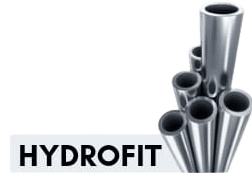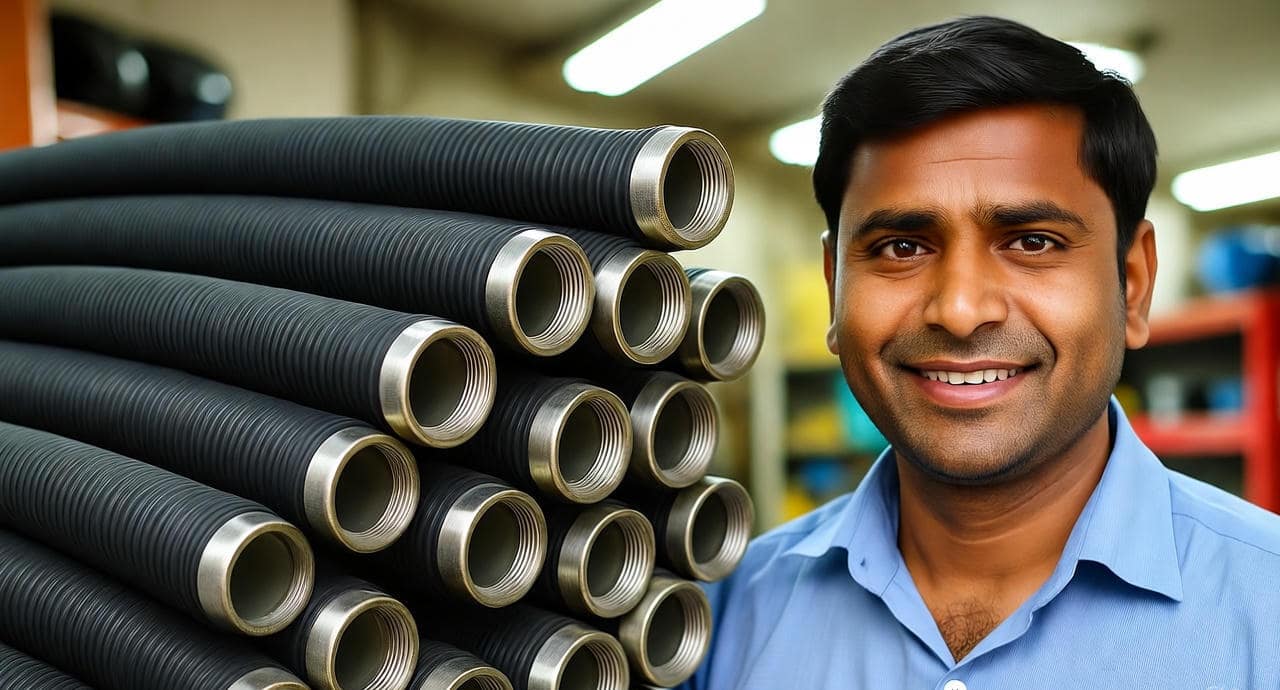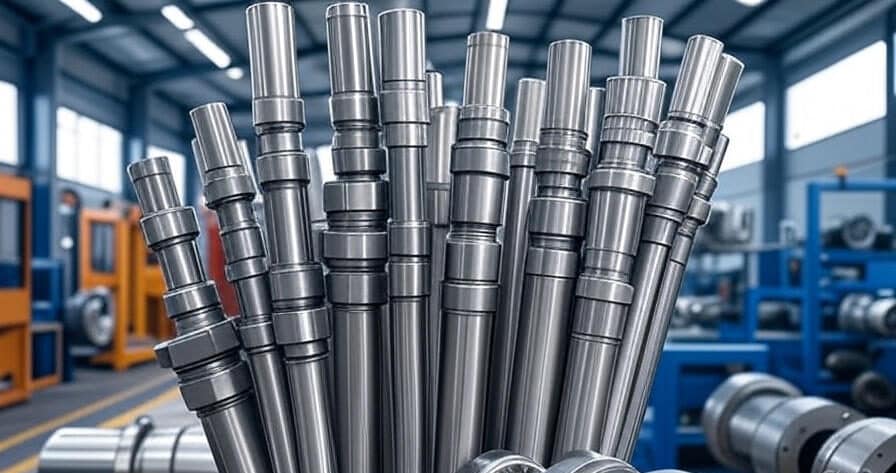+91-79045 61980 | Located in Chennai, TN
Ultimate guide to Seamless Tubes and Pipes

A seamless tubes and pipes are hollow cylindrical product which is used in many industries like construction, oil and gas, power plant, chemical and also automobile. It is called seamless because there is no welding joint or seam along its length. In welded pipe, one weak line is always present, but in seamless pipe this problem is not there. This is why hydraulic seamless pipe or tube is considered stronger, more reliable and safe in high pressure and temperature condition.
How Seamless Tubes and Pipes are Manufactured
The process starts with solid round steel bar, known as billet. This billet is heated at very high temperature, and then pierced at center with mandrel to form hollow shell. Later this shell is elongated and reduced in diameter through rolling and stretching. Final step is sizing and finishing to make pipe with uniform wall and correct size.
Because of no welding seam, the strength of seamless pipe is same all along its length. That is why it is used in critical systems where leakage or breakage cannot be allowed.
Why Seamless Pipe is Preferred
Seamless pipe is not always cheapest, but it is most trusted where safety and long life is required. It is chosen in below situations:
-
When high pressure and strength is necessary (oil and gas pipeline).
-
When corrosion resistance is important (chemical plant, marine).
-
When accurate dimension and tolerance is required (automobile brake line).
-
When appearance is also matter (architectural or decorative design).
Different Grades and Types of Seamless Pipes
Carbon Steel Seamless Pipe
Most commonly used for general industry. ASTM A106 grade A, B, C are widely used in oil, gas and power plant. They are economical and strong, suitable for high temperature service.
Stainless Steel Seamless Pipe
-
Austenitic stainless (304, 316): excellent corrosion resistance, used in pharma, food, and chemical.
-
Duplex stainless (2205): higher strength and better corrosion resistance, good for offshore.
-
Ferritic stainless (409, 430): cost effective, used in automobile exhaust system.
Alloy Steel Seamless Pipe
ASTM A335 grades P11, P22, P91 are used in power generation and petrochemical plant. They can work in high temperature and pressure.
Nickel Alloy Seamless Pipe
-
Inconel: used in aerospace and chemical, high temp resistant.
-
Monel: strong against seawater corrosion, used in marine.
-
Hastelloy: excellent in chemical industry.
Copper and Copper Alloy Seamless Pipe
-
Copper: common in plumbing and HVAC due to thermal conductivity.
-
Copper-nickel: excellent against seawater, used in shipbuilding.
Titanium Seamless Pipe
Light weight and high corrosion resistance, used in aerospace and chemical.
Super Duplex Stainless Pipe
Combines high strength and corrosion resistance, used in offshore oil rigs.
Carbon Manganese and Low Alloy Steel Pipe
For cryogenic and low temperature application, also for structural and general industry.
Actual Manufacturing Process – Seamless Tubes and Pipes
Step 1: Raw Material Selection
The billet is selected as per required grade – carbon steel seamless pipe, stainless steel seamless pipe or alloy steel. Billet is inspected for cracks or defect before heating.
Step 2: Heating and Piercing
Billet is heated in furnace, then pierced with mandrel to create hollow shell. Methods like rotary piercing or Mannesmann process are used.
Step 3: Elongation and Reduction
Hollow shell is elongated and reduced in diameter through pilger mill or rolling stands. This makes wall thickness uniform and improves strength.
Step 4: Sizing
Pipe passes through sizing stands to refine diameter and surface finish.
Step 5: Heat Treatment
Depending on grade, processes like:
-
Normalizing,
-
Quenching and tempering,
are done to achieve toughness, ductility and hardness.
Step 6: Testing and Inspection
Every seamless pipe must pass quality control. Tests include ultrasonic, eddy current, hydrostatic pressure, dimensional inspection and chemical analysis.
Step 7: Cutting and Finishing
Pipes are cut to length, end faced, deburred and surface treated with oil or zinc.
Step 8: Final Inspection and Packing
Visual check, marking, bundling and packaging done before shipping.
Applications of Seamless Tubes and Pipes across Industries
Oil and Gas Industry
-
Used for drilling and casing in oil wells.
-
Transport crude oil and gas in pipelines.
Petrochemical Industry
-
Used in refinery distillation and cracking.
-
Carry chemicals in corrosive environment.
Power Generation
-
Used in high pressure boiler tubes.
-
In heat exchanger systems.
Aerospace
-
For engine components made from alloy seamless tubes.
-
In aircraft structural frame.
Automobile Industry
-
Used in exhaust systems, hydraulic cylinder, brake and fuel lines.
-
In chassis and roll cage for racing cars.
Construction
-
Used in building structure, bridge, scaffolding.
Marine Industry
-
Shipbuilding, offshore platform with copper-nickel tubes.
Food and Pharma
-
Stainless steel seamless tube used in clean fluid transfer.
Mining and Nuclear
-
Mining equipment using durable tubes.
-
Nuclear reactors with specialty alloy tubes.
Renewable Energy
-
Used in solar thermal and geothermal systems.
Advantages of Seamless Tubes and Pipes
Only one bullet list section here:
-
High strength and durability.
-
Reliable with no weak weld seam.
-
Uniform thickness and dimension.
-
Smooth internal bore for fluid flow.
-
Excellent corrosion resistance in stainless or alloy grade.
-
Withstand high pressure and high temperature.
-
Clean surface, good for pharma and food use.
-
Long life and less maintenance cost.
Because of these benefits, seamless hydraulic pipe is always first choice in critical systems like oil and gas, automobile, power and chemical industry.
Standards and Specification for Seamless Tubes
Many global and Indian standards are followed for seamless tube manufacturing:
-
DIN 2391 / EN 10305 – European standard for precision tubes.
-
ASTM A106 / A519 / A335 – American standards for carbon, alloy and pressure tubes.
-
SAE J524 / J525 – automotive tubing standard.
-
IS 1239 / IS 3589 – Indian standards for carbon steel pipe.
Each standard defines chemical composition, mechanical property, size tolerance and testing requirement. By following such specification, the quality and safety of seamless pipe supplier is maintained.
Why You Should Choose Quality Seamless Pipe Supplier
Buying seamless pipe is not only about price. Right supplier will give:
-
Material certificate,
-
Tested quality,
-
Different grades in stock,
-
Timely delivery.
If you want to purchase carbon steel seamless pipe, stainless steel seamless pipe or alloy steel seamless pipe, always choose supplier who provide genuine tested products. This saves cost in long run and give trust in your system.
Key takeaways
Seamless pipe and tube is one product but used in so many industries – oil, gas, power, automobile, aerospace, chemical, marine and even renewable energy. They are stronger, safer and more reliable compared to welded pipe. From manufacturing process to testing, everything is done to ensure pipe will not fail in high pressure or high temperature.
Because of advantages like long life, corrosion resistance and consistent quality, seamless tubes are backbone of modern industry. If you are searching for reliable hydraulic seamless pipes supplier in India, always go for certified and trusted company who can deliver right product in right time.


